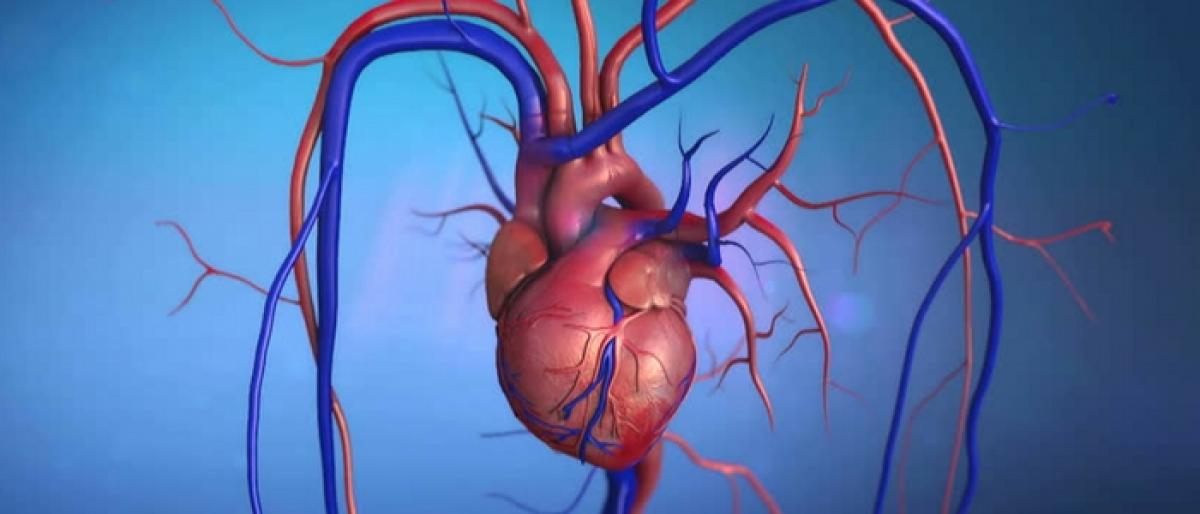Live
- Manipur violence: Assam Police mount 24x7 vigil along inter-state border
- The Impact of Wellness Programs on Employee Engagement and Retention
- IS claims responsibility for deadly attack in Afghanistan
- The Future of MSMEs: Embracing Innovation and Sustainability for Growth
- Army chief returns from Nepal after defence cooperation talks
- ‘Vikatakavi’ shines at IFFI, Goa
- Tamannaah highlights the strengths of south Indian cinema
- Shivanna’s ‘BhairathiRanagal’ locks Telugu release date
- Startup Ecosystem and Technology: Revolutionizing India’s Retail Fashion
- SDT’s ‘Satya’looks favorite at Filmfare Short Film Awards 2024
Just In

Scientists have discovered genetic interactions that may allow heart cells to regenerate, an advance that could lead to new therapies to treat cardiac diseases. Researchers from the University of Florida (UF) in the US found genes known to form hearts cells in humans and other animals in the gut of a muscle-less and heartless sea anemone.
Washington: Scientists have discovered genetic interactions that may allow heart cells to regenerate, an advance that could lead to new therapies to treat cardiac diseases. Researchers from the University of Florida (UF) in the US found genes known to form hearts cells in humans and other animals in the gut of a muscle-less and heartless sea anemone.
The sea anemone can regenerate into a new animal if it is cut into many pieces. Researchers analysed the function of its "heart genes," and discovered a difference in the way these genes interact with one another, which may help explain its ability to regenerate, said Mark Martindale, a professor at UF.
The findings, published in the journal Proceedings of the National Academy of Sciences, point to potential for tweaking communication between human genes and advancing our ability to treat heart conditions and stimulate regenerative healing, he said.
"Our study shows that if we learn more about the logic of how genes that give rise to heart cells talk to each other, muscle regeneration in humans might be possible," Martindale said. These heart genes generate what engineers calls lockdown loops in vertebrates and flies, which means that once the genes are turned on, they tell each other to stay on in an animal's cells for its entire lifetime.
In other words, animals with a lockdown on their genes cannot grow new heart parts or use those cells for other functions. "This ensures that heart cells always stay heart cells and cannot become any other type of cell," Martindale said. However, in sea anemone embryos, the lockdown loops do not exist.
The finding suggests a mechanism for why the gut cells expressing heart genes in sea anemones can turn into other kinds of cells, such as those needed to regenerate damaged body parts, Martindale said. The study supports the idea that definitive muscle cells found in the majority of animals arose from a bifunctional gut tissue that had both absorptive and contractile properties.
While the gut tissue of a sea anemone might not look like a beating heart, it does undergo slow, rhythmic peristaltic waves of contraction, much like the human digestive system. Researchers argue that the first animal muscle cells might have been very heart-like, Martindale said.
"The idea is these genes have been around a long time and preceded the twitchy muscles that cover our skeleton," Martindale said. Continued research could one day allow scientists to coax muscles cells into regenerating different kinds of new cells, including more heart cells, Martindale said.

© 2024 Hyderabad Media House Limited/The Hans India. All rights reserved. Powered by hocalwire.com







